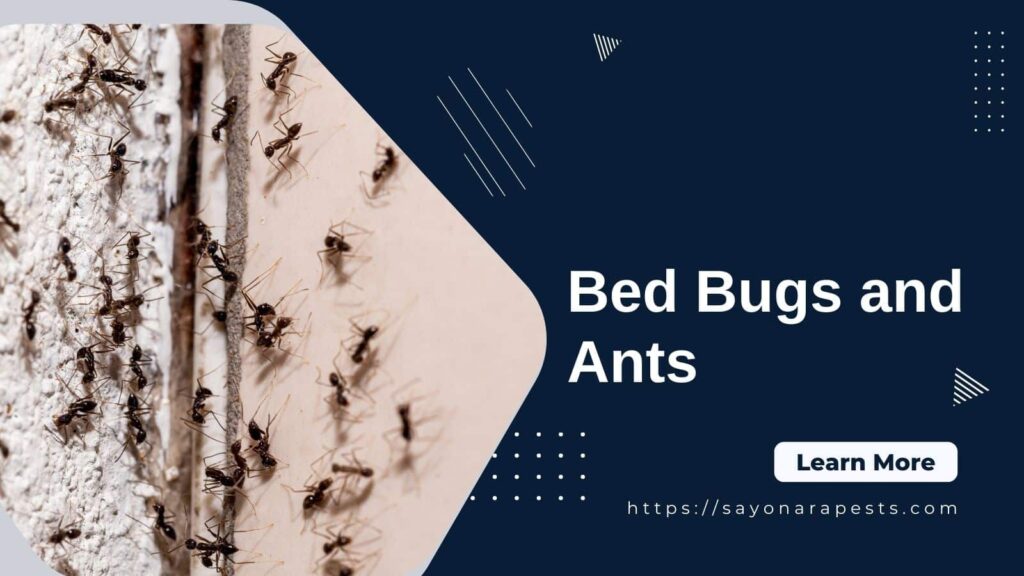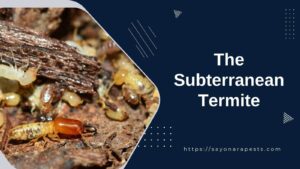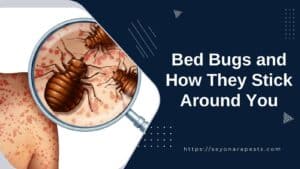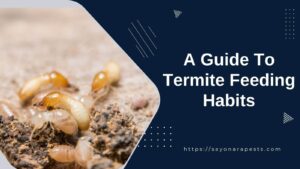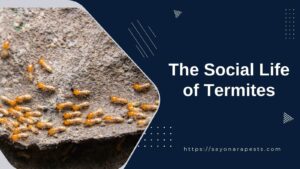In recent years, there has been a dramatic increase in reports of bed bugs and ants. These pests can cause a great deal of damage to personal property and public infrastructure and can also be challenging to get rid of.
In this post, we will explore the biology and behaviour of these two types of insects and some methods for controlling them.
Bed bugs are small, brownish insects that feed on the blood of animals and humans. They are attracted to warmth and carbon dioxide, which makes them often found near beds or other furniture where people sleep or rest. Bed bugs can survive for several months without food, making them difficult to get rid of once they have infested an area.
Ants are also small insects but are more diverse in appearance and behaviour. Some ants live in colonies that can contain millions of individuals, while others are solitary. Some ants are attracted to sweet foods, while others prefer protein-rich sources.
Most ants do not cause damage to property or pose a threat to humans, but some species can be very invasive. Some ants, like the red fire ant, can deliver a painful sting that can be dangerous to people with allergies. Like the Argentine ant, other ants can displace native species and disrupt ecosystems.
Several methods can be used to control bed bugs and ants, but it is essential to identify the type of insect before selecting a control method. For example, using insecticides to kill bed bugs is ineffective if the insects resist the chemicals.
Bed bugs can be controlled by vacuuming, using heat or cold treatments to kill them, or treating infested areas with insecticides. Ants can be controlled by baiting them with food, using insecticides, or physically removing them from infested areas.
If you have a bed bug or ant problem, it is vital to contact a professional pest control company to assess the situation and develop a control plan. Controlling these pests can be difficult and time-consuming, and it is often more effective to let the experts handle it.
Do Ants Eat Bed Bugs?
Yes, some ants do eat bed bugs. However, not all ants are interested in eating bed bugs, and many other factors determine whether or not an ant will eat a bed bug.
The most common ants that eat bed bugs include the Pharaoh ant, Crazy ant, and Argentine ant. These ants are attracted to the blood of bed bugs and will often invade homes and other buildings in search of them.
Other ants, such as the carpenter and red fire ant, do not typically eat bed bugs but may do so if they are hungry enough.
Still, other ants, such as the odorous house ant and pavement ant, do not eat bed bugs at all.
Observing the ant’s behaviour is the best way to determine if an ant will eat a bed bug. If an ant is actively searching for bed bugs or seems interested in them, there is a good chance that the ant will eat bed bugs.
Bed Bugs vs. Pharaoh Ants
The two most common pests people call us about are bed bugs and pharaoh ants. Although they may seem similar, these two pests are quite different. Here is a quick guide to help you tell them apart.
Bed Bugs:
-Are tiny, flat, and brownish in color
-Feed on human blood
-Are most active at night
-Can live for several months without food
Pharaoh Ants:
-Are small and yellowish in color
-Feed on sweets and other dead insects
-Are most active during the day
-Need to eat every few days or they will die
Bed Bugs vs. European Fire Ants
There are a few critical differences between bed bugs and European fire ants. For one, bed bugs are much more minor, typically only growing to be about 5-7 mm in length. On the other hand, fire ants can grow up to 6 times that size at around 30-40 mm. Additionally, bed bugs are typically brown or reddish in color, while fire ants are black.
Another key difference is that bed bugs feed on blood, while fire ants feed on other insects. This is why bed bugs are often found near homes where people sleep, as they can easily bite humans and animals to get a meal. On the other hand, fire ants do not typically bother humans and will instead go after other insects they can find.
Finally, bed bugs are not known to be aggressive, while fire ants can be aggressive if they feel threatened. If you have either of these pests in your home, it is crucial to call a professional to have them removed. Trying to do it yourself could result in you being bitten or stung.
Bed Bugs vs. Red Imported Fire Ants
Bed bugs and red imported fire ants are the two most common household pests. Both pests can be quite a nuisance, but there are some key differences between them.
Red imported fire ants are small, red insects that live in colonies. They are often found in gardens or other outdoor areas. Fire ants can bite and sting, which can cause pain and swelling. In some cases, fire ant stings can also cause allergic reactions.
So, what’s the difference between bed bugs and red imported fire ants? Here are some key points:
-Bed bugs feed on blood, while fire ants do not.
-Fire ants can sting and bite, while bed bugs cannot.
-Fire ants are more likely to be found outdoors, while bed bugs are more likely indoors.
-Bed bugs are minor and flat, while fire ants are small and round.
-Bed bugs are brown or reddish in color, while fire ants are red.
These insects are both small and brown, and you can find them in most homes. Red imported fire ants are more aggressive than bed bugs, and their bites can be painful and dangerous to people with allergies.
Bed bugs do not bite humans unless they are starved, and even then, their bites are not dangerous.
According to the Environmental Protection Agency, “Red imported fire ants are more difficult to manage, making them a significant pest problem.”
Bed Bugs vs. Asian Needle Ants
There are many differences between bed bugs and Asian needle ants. The most obvious difference is their size; bed bugs are much more minor than Asian needle ants. Bed bugs are also brownish in colour, while Asian needle ants are black.
Bed bugs feed on the blood of animals and humans, while Asian needle ants do not. Bed bugs attract warmth and carbon dioxide, while Asian needle ants are not.
Asian needle ants can be very aggressive and sting people if they feel threatened. Bed bugs do not sting people.
Asian needle ants can also be dangerous to animals; they have been known to kill small birds and mammals. Bed bugs do not pose a threat to animals.
Finally, Asian needle ants are much more challenging to control than bed bugs. Insecticides do not work well against Asian needle ants, so physical removal is often the only option.
Bed Bugs vs. Argentine Ants
Argentine ants are a species of ant that is native to South America. They have been introduced to many other parts of the world and are now considered global pests. Argentine ants are very small, only about 2.5 mm in length. They are light brown in color and have smooth, shiny exoskeleton.
Bed bugs are small, wingless insects that feed on the blood of humans and animals. They are reddish-brown in color, oval in shape, and about 4-5 mm in length. Bed bugs are not able to fly, but they can crawl quickly. They often hide within cracks and crevices of walls, floors, and furniture.
Argentine ants are attracted to sweet foods, while bed bugs are attracted to the warmth and carbon dioxide that humans and animals give off. Argentine ants and bed bugs can be found in households, but Argentine ants are more likely to be found in kitchens, while bed bugs are more likely found in bedrooms.
Bed bugs are a serious problem because they can cause itching and swelling. They can also transmit diseases, such as hepatitis B and typhus. Argentine ants are not known to transmit disease, but they can be a nuisance because they invade homes in large numbers and steal food.
If you think you have bed bugs or Argentine ants, it is crucial to contact a pest control professional. These insects can be challenging to eliminate, so it is best to leave it to the experts.
Bed Bugs vs. Carpenter Ants
Bed bugs and carpenter ants are many similarities- small, wingless insects that feed on human blood. However, there are also some crucial differences.
For one thing, carpenter ants do not carry diseases, while bed bugs can transmit several serious illnesses, including the Zika virus, chikungunya, and dengue fever.
Carpenter ants are also much more significant than bed bugs and have a distinctive “waist” that bed bugs lack. Carpenter ants are also more likely to be found outdoors, while bed bugs are primarily indoor pests.
Finally, carpenter ants eat wood, while bed bugs only eat blood. This means that carpenter ants can cause severe damage to your home if they are not controlled, while bed bugs will only cause annoyance and discomfort.
Suppose you have an infestation of either bed bugs or ants. In that case, it is essential to contact a professional pest control company to assess the situation and develop a control plan.
Controlling these pests on your own can be difficult and time-consuming, and it is often more effective to let the experts handle it.

